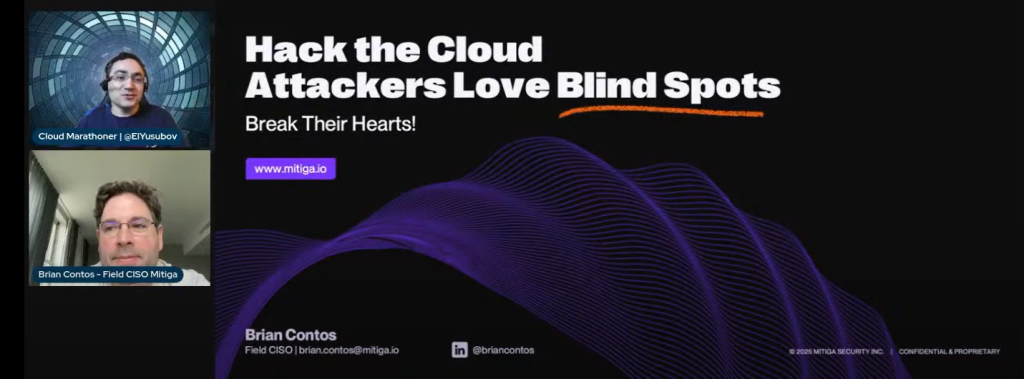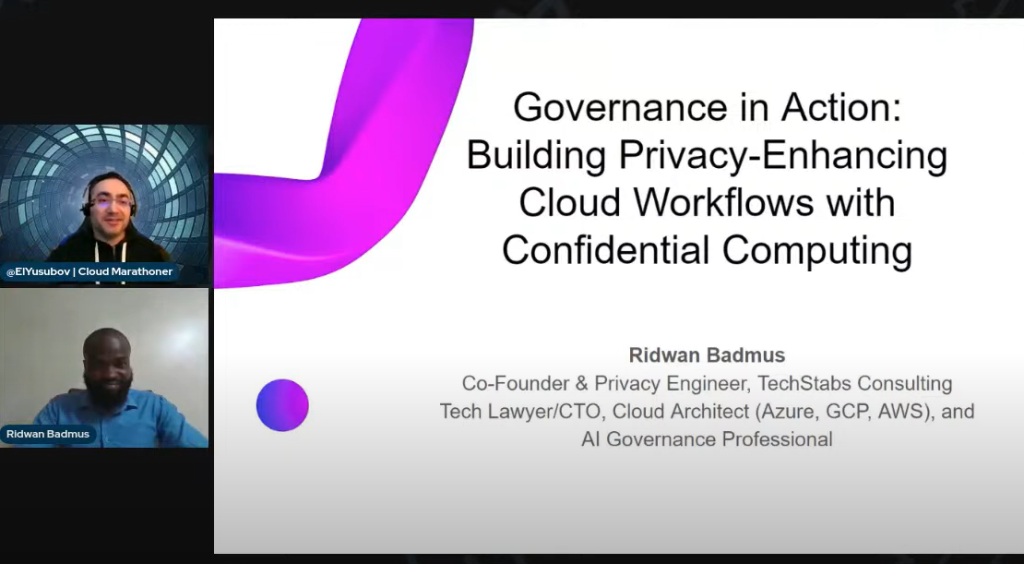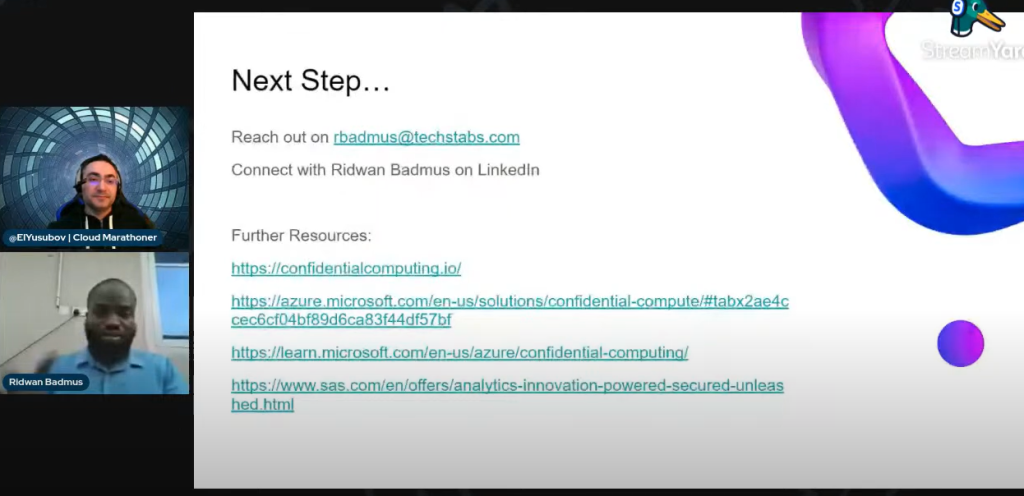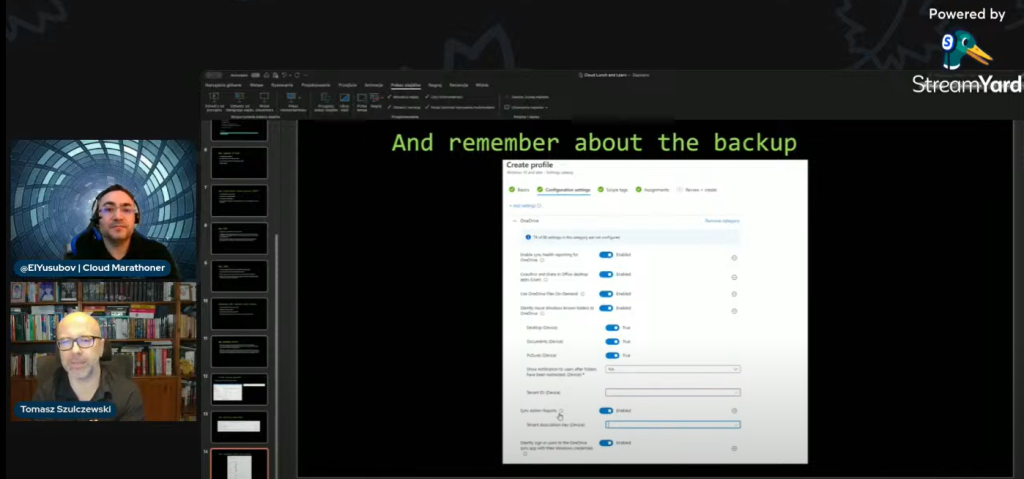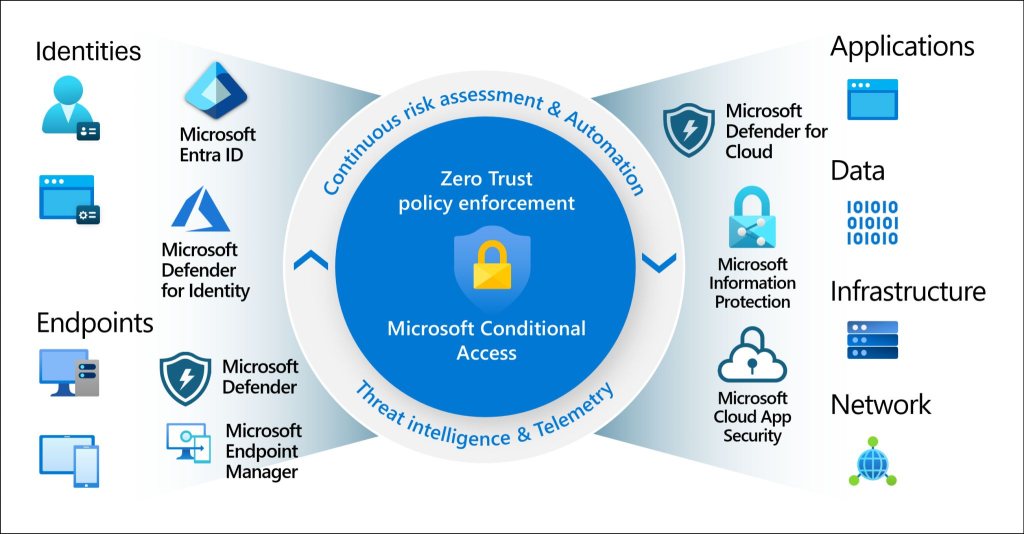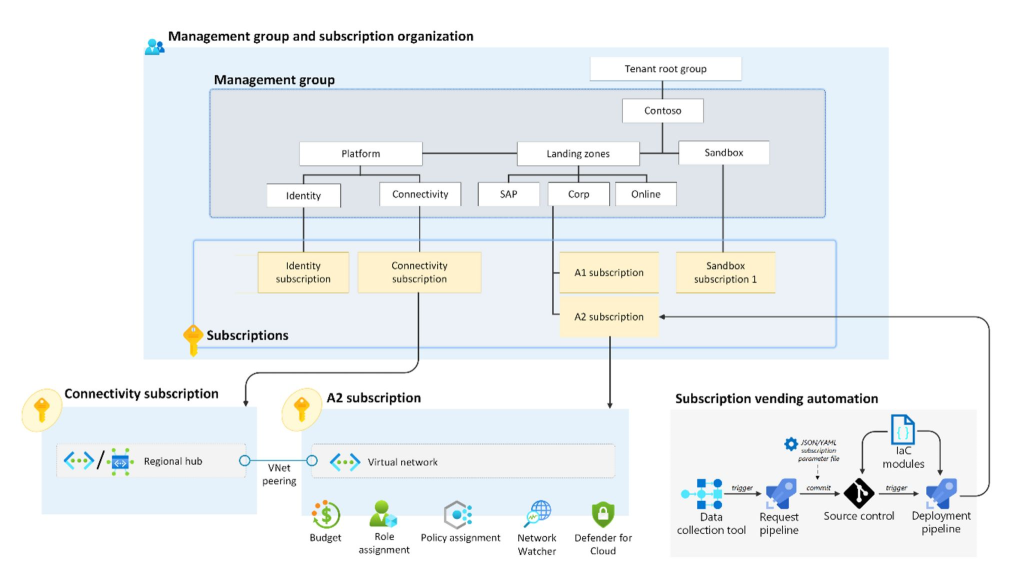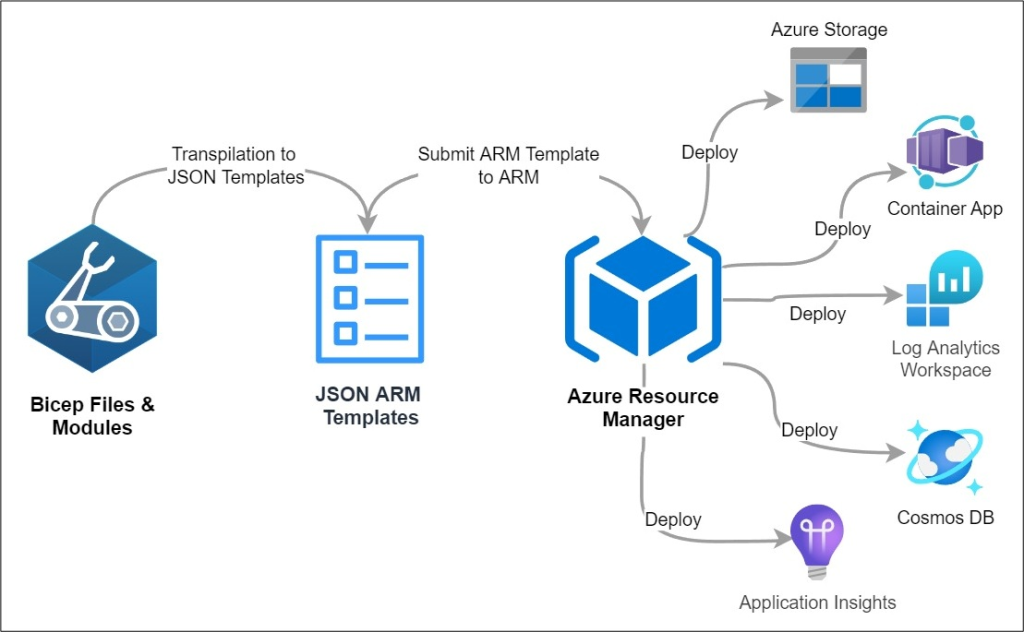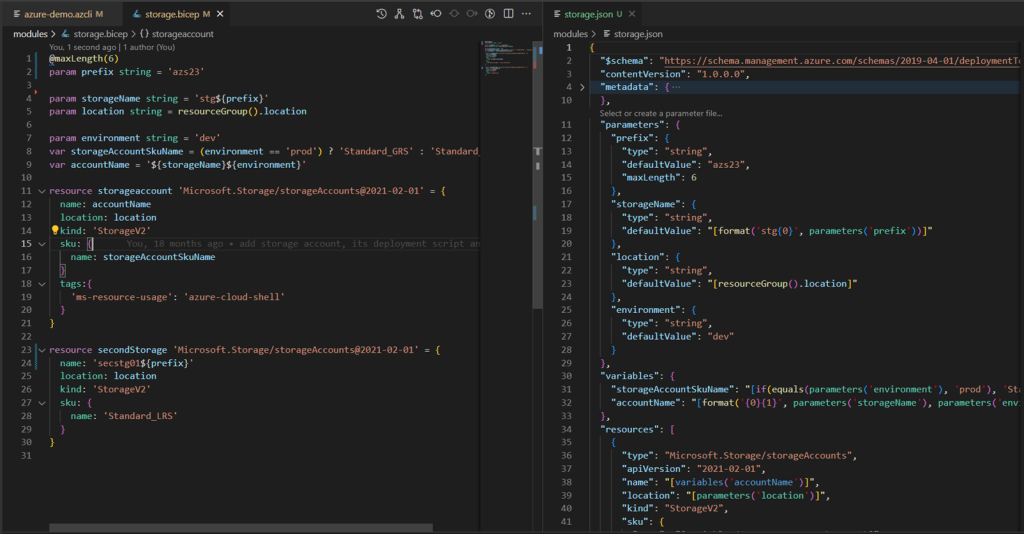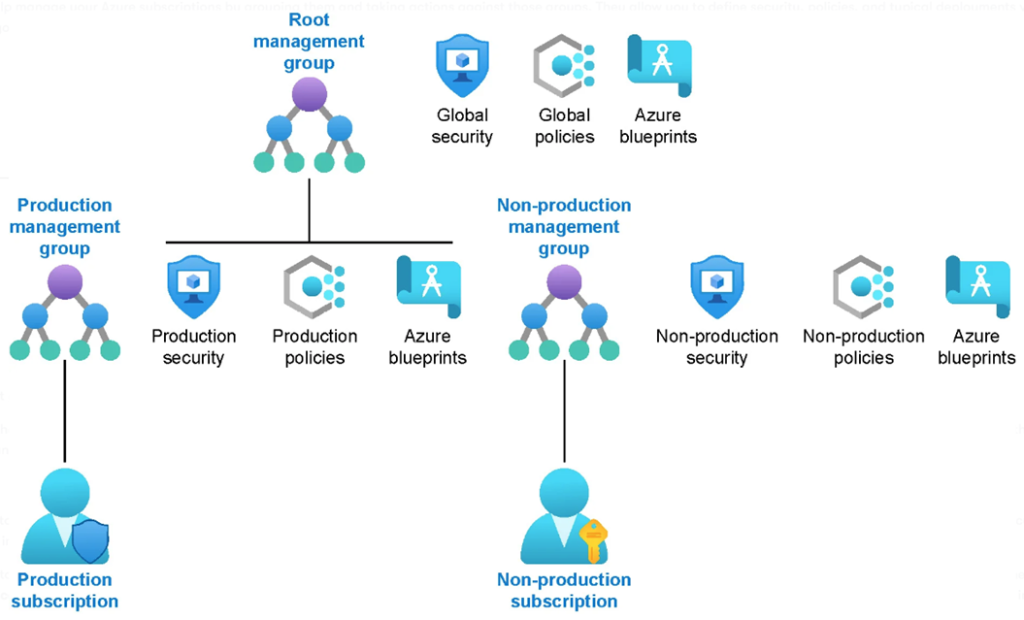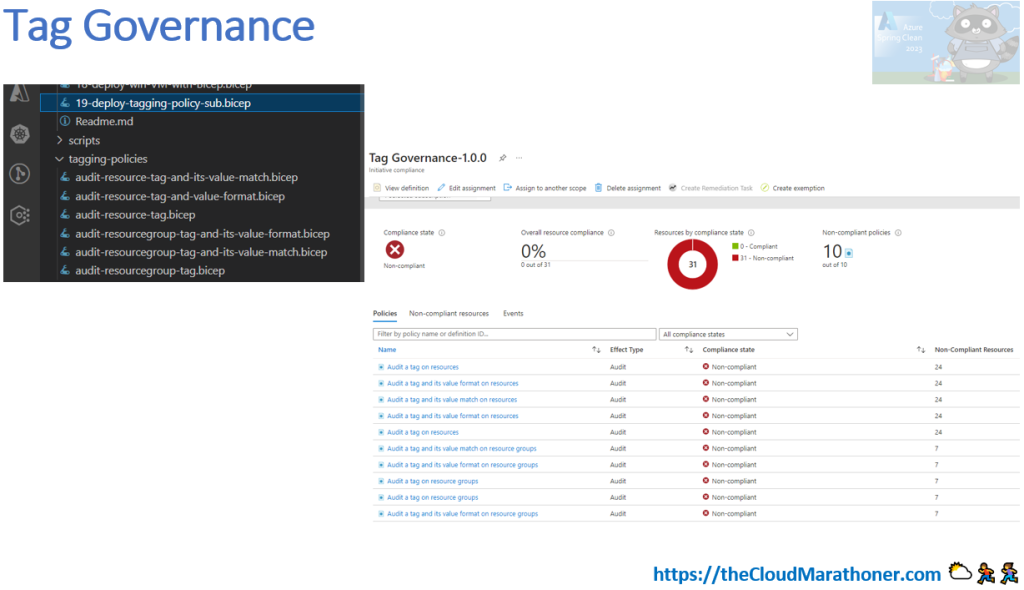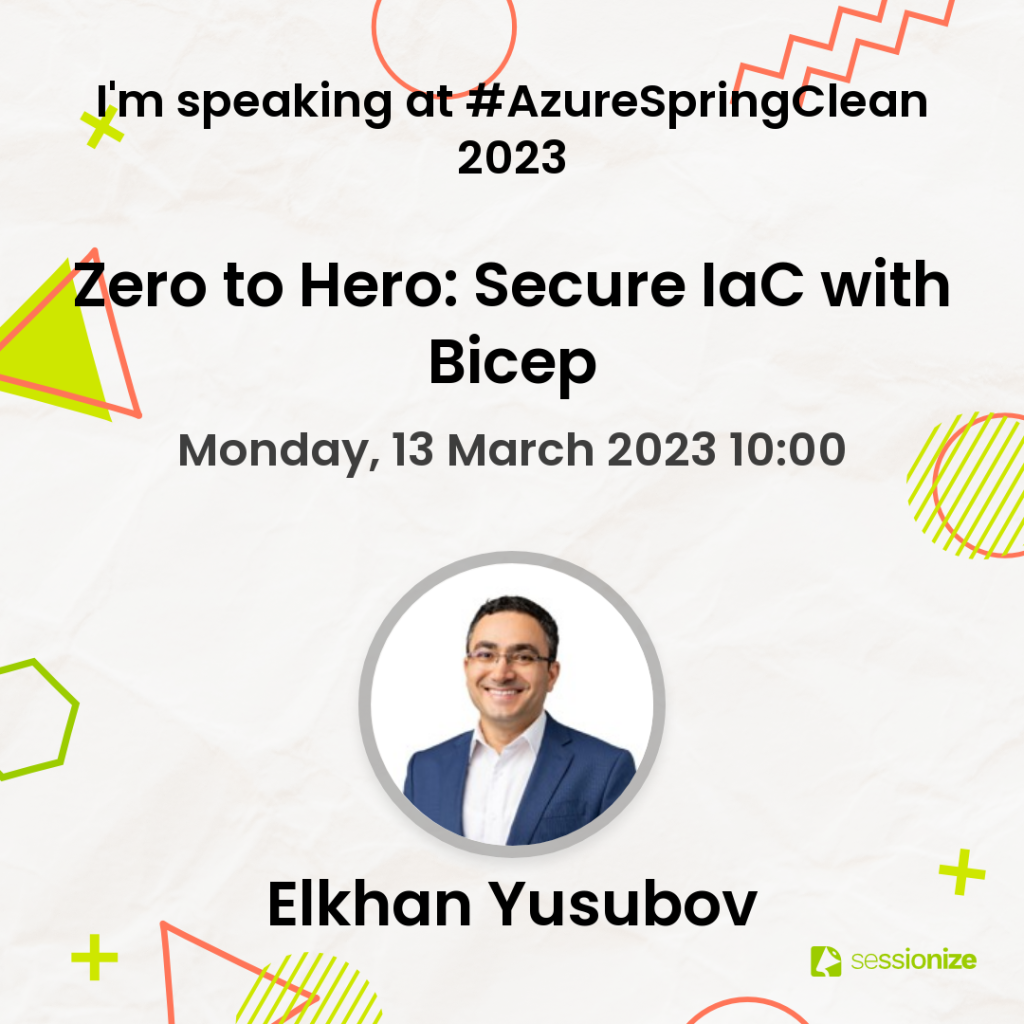Greetings to all Cloud community and Cloud Marathoner friends!
Did you know that the Cyber Back to School 2025 is started on October first?
It is community organized event that you don’t want to miss out.
Cyber Back to School event
Cyber Back to School is an annual community event featuring IT professionals from across the world. This event was started in 2024 by Microsoft MVP and MCT Community Lead, Dwayne Natwick. Microsoft community Leader, Microsoft MCT, blogger, and public speaker, Derek Smith, joined the team as co-organizer in 2025.
In 2025, Cloud Marathoner and Microsoft MVP and MCT, Elkhan Yusubov began assisting with social media and promotion of the event. Community members submit sessions, either videos or blog articles, to provide viewers with actionable knowledge. The event takes place every October, from 01 October to 31 October.
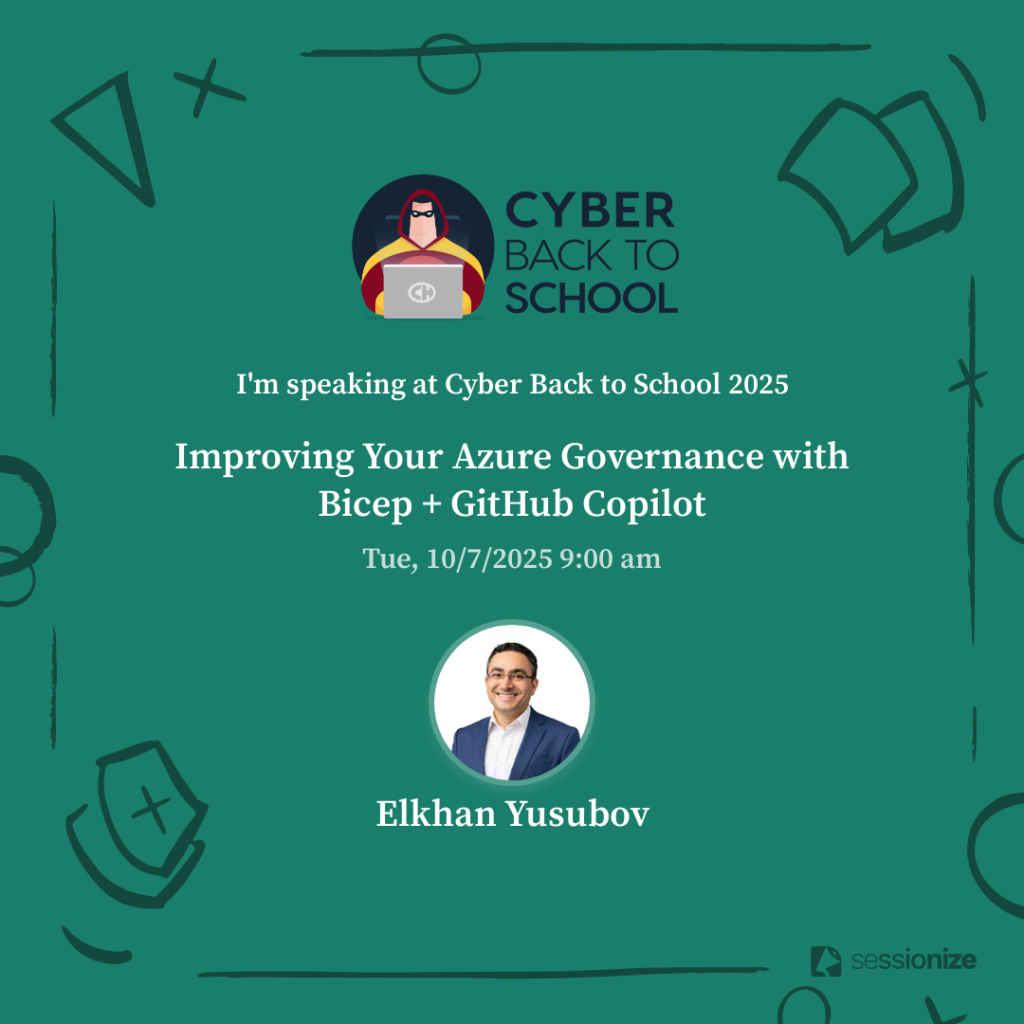
This year I submitted two sessions and look forward to sharing the first one on this blog below.
What is covered in my session?
Strong governance is the foundation of a secure, scalable, and cost-effective cloud environment. In this hands-on session, we’ll explore together how to use Bicep — Azure’s new infrastructure as code language —alongside GitHub Copilot to streamline and strengthen your Azure governance strategy.
You will learn the following in this session:
- ✅ Azure Governance: policies, role-based access control (RBAC), resource locks, and naming conventions
- ✅ Resource Governance rules with Bicep code
- ✅ GitHub Copilot to the rescue of reduce errors and follow best practices in IaC
- ✅ Real-world examples
- ✅ Automating governance at scale
- ✅ Tips for integrating governance into your CI/CD workflows
This session is designed for early-career cloud engineers and architects looking to build confidence in managing Azure environments with automation and AI-assisted development.
Azure Governance
As a cloud engineer or working professional stepping into the world of Microsoft Azure, one of the most important concepts to grasp early is Azure Governance. Think of it as the set of rules and practices that help organizations manage their cloud resources effectively, securely, and in a cost-efficient way. Let’s break down some of the key components of Azure Governance:
🛡️Azure Policies – Enforcing Rules
Azure Policies are like the rulebook for your cloud environment. They help ensure that resources are created and managed in a way that aligns with your organization’s standards. For example: You can create a policy that only allows resources to be deployed in specific regions (e.g., only in West Europe or East US), or that requires all storage accounts to have encryption enabled.
Why it matters?
It helps prevent misconfigurations, ensures compliance, and keeps your environment secure and cost-effective.
👥 Role-Based Access Control (RBAC) – Managing Who Can Do What
RBAC is Azure’s way of controlling who has access to what resources and what actions they can perform. For example: You can give a developer access to manage virtual machines in a resource group but not allow them to delete the resource group itself.
Why it matters?
It follows the principle of least privilege, ensuring users only have the permissions they need—nothing more, nothing less.
🔒 Resource Locks – Preventing Accidental Deletion or Changes
Resource Locks are like putting a “Do Not Touch” sign on critical resources. We have following types of locks:
- ReadOnly – Users can read the resource but can’t make changes.
- CanNotDelete – Users can modify the resource but can’t delete it.
As a use case example: You can lock a production database to prevent accidental deletion during maintenance.
Why it matters?
It adds an extra layer of protection for important resources and prevents accidental changes in your important resources.
🏷️ Naming Conventions – Keeping Things Organized
Naming conventions are standardized ways of naming your resources so they’re easy to identify and manage. For example: A virtual machine name like vm-prod-weu-app01 could tell you the following additional information:
- It’s a VM
- Used in production
- Located in West Europe
- It’s an app server
Why it matters?
It improves clarity, helps with automation, and makes managing large environments much easier.
🧩 Bringing It All Together
Imagine you’re building a cloud environment for a company. With Azure Governance you can achieve the following mission:
- Define rules (Policies)
- Control access (RBAC)
- Protect critical resources (Locks)
- Stay organized (Naming Conventions)
Together, these tools ensure your cloud environment is secure, compliant, and manageable—even as it grows. Mastering Azure Governance early will set you up for success as you build scalable, secure, and well-managed cloud solutions.
Resource governance with Bicep Code
Resource governance with Azure Bicep empowers organizations to manage cloud resources consistently and securely through declarative infrastructure-as-code. By defining policies, role assignments, and resource configurations in Bicep templates, teams can enforce compliance, reduce configuration drift, and automate deployments across environments. This approach enhances visibility and control, ensuring that resources adhere to organizational standards from the moment they’re provisioned.
Additionally, Bicep simplifies governance by integrating seamlessly with Azure Policy and management groups, enabling scalable enforcement of rules across subscriptions. Its modular structure promotes reuse and collaboration, allowing teams to build standardized templates for tagging, cost management, and security controls. Ultimately, Bicep streamlines governance workflows, reduces manual overhead, and fosters a culture of accountability and best practices in cloud operations.
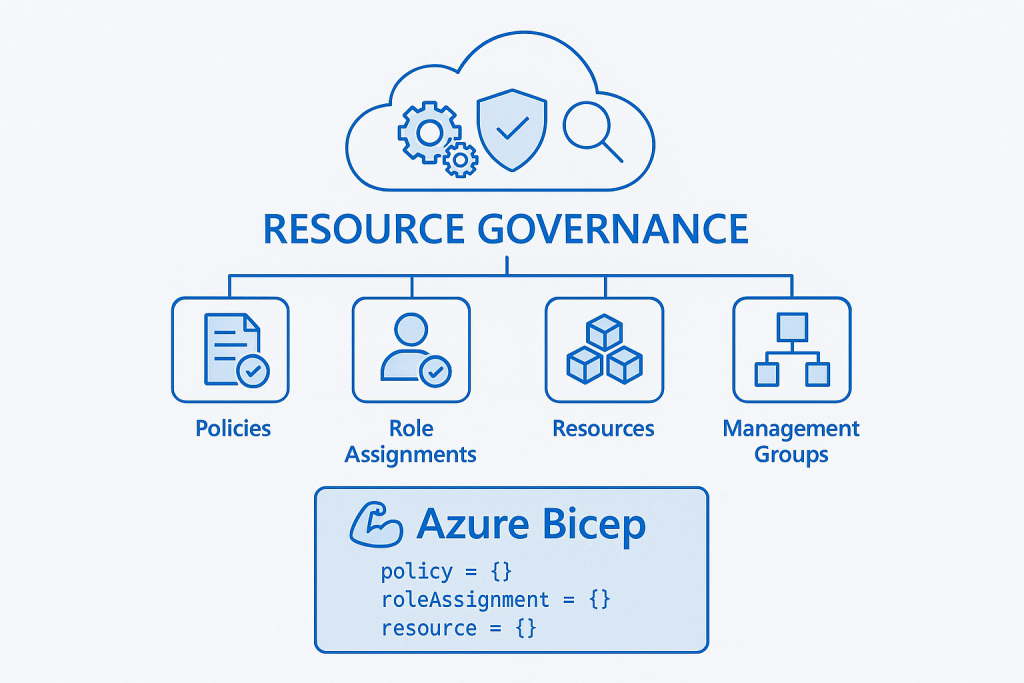
GitHub Copilot to the rescue
Related content of content
Automating governance
Related content of content
integrating governance into your CI/CD
Related content of content
Demo and references
Related content of content
Updates coming soon
Stay tuned for details, as the complete post is in-progress and be available on the week of Oct 7, 2025

